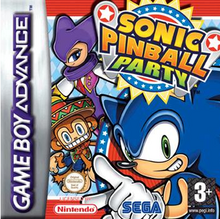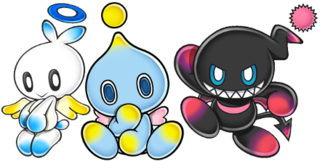
Chao are fictional life-forms in the Sonic the Hedgehog video game series published by Sega. They are small, childlike creatures that go through a complex life cycle and exist in several visual forms depending on how they are raised. Developer Sonic Team incorporated Chao into the games to encourage players to explore levels and support the good–evil dichotomy of Sonic Adventure 2.

ChuChu Rocket! is an action puzzle game developed by Sonic Team and published by Sega. Released for the Dreamcast in 1999, it was the first game for the system to support online console gaming. Players must place arrows on a board to lead mice into escape rockets while avoiding cats. The game features single-player modes in which a player must save all the mice on a board, and a multiplayer mode in which players battle to collect the most mice.

Sonic Advance, known as SonicN on the N-Gage, is a 2001 platform game developed by Dimps and published by Sega for the Game Boy Advance. It was the first Sonic the Hedgehog game released on a Nintendo console with Sonic Adventure 2: Battle on the GameCube, and was produced in commemoration of the series' tenth anniversary. The story follows Sonic, Tails, Knuckles, and Amy as they journey to stop Doctor Eggman from taking over the world. Controlling a character, players are tasked with completing each level, defeating Eggman and his robot army, and collecting the seven Chaos Emeralds.
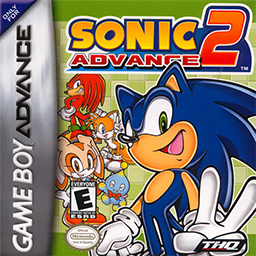
Sonic Advance 2 is a 2002 platform video game developed by Dimps and published by Sega for the Game Boy Advance. It is an installment in the Sonic the Hedgehog series and the sequel to 2001's Sonic Advance. The story follows Sonic as he sets out to save his friends and retrieve the seven magical Chaos Emeralds from Dr. Eggman. Gameplay consists of the player completing various levels as one of five characters, each with their own unique attributes. After each zone is completed, the player faces Dr. Eggman in a boss battle.

Altered Beast is a 1988 beat 'em up arcade video game developed and published by Sega. The game is set in Ancient Greece and follows a player character chosen by Zeus to rescue his daughter Athena from the demonic ruler of the underworld, Neff. Through the use of power-ups, the player character can assume the form of different magical beasts. It was ported to several home video game consoles and home computers. It was the pack-in game for the Mega Drive when that system launched in 1988.

Sonic the Hedgehog Spinball, also known as Sonic Spinball, is a 1993 pinball video game developed by Sega Technical Institute and published by Sega. It is a spinoff of the Sonic the Hedgehog series. Players control Sonic the Hedgehog, who must stop Doctor Robotnik from enslaving the population in a giant pinball-like mechanism. The game is set in a series of pinball machine-like environments with Sonic acting as the pinball.

Pokémon Pinball: Ruby & Sapphire is a 2003 pinball game developed by Jupiter and published by The Pokémon Company and Nintendo for the Game Boy Advance handheld game console. It was first revealed at E3 2003. The North American release was done to coincide with the fifth anniversary of the North American release of Pokémon Red and Blue. It is based on Pokémon Ruby and Sapphire, and is a sequel to Pokémon Pinball for the Game Boy Color. In some ways, it plays like a traditional pinball game, where the objective is to get a high score by keeping the ball in play as long as possible and hitting bumpers. In keeping with the theme of Pokémon, it features Pokémon collection, where while the players play pinball, they must also capture the eponymous creatures.

Sonic Battle is a 2003 fighting video game developed by Sonic Team for the Game Boy Advance. It is the second fighting game in the Sonic the Hedgehog series, the first game being Sonic the Fighters. It was released in Japan in December 2003 and in North America and Europe in early 2004. The game received a lukewarm response from critics.
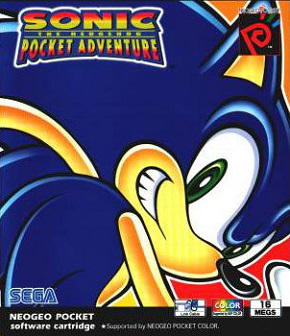
Sonic the Hedgehog Pocket Adventure is a platform game developed by SNK and published by Sega for the Neo Geo Pocket Color in 1999. The game is based on Sonic the Hedgehog 2 (1992) for the Sega Genesis, borrowing much of the stage themes and gameplay elements, but featuring unique stage layouts, elements from other Genesis Sonic the Hedgehog games, and extra game modes. Sega's Yuji Naka and the rest of Sonic Team supervised over production.

Crazy Taxi is a series of racing games developed by Hitmaker and published by Sega. It was first available as an arcade video game in 1999, then released for the Dreamcast console in 2000. It is the third best-selling Dreamcast game in the United States, selling over a million copies. The game was later ported to the PlayStation 2, GameCube, and IBM PC compatibles with sequels also appearing on the Xbox, Game Boy Advance, and PlayStation Portable systems.
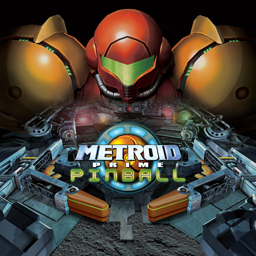
Metroid Prime Pinball is a pinball video game themed after the Metroid series. The game uses the graphical style and various story elements from Metroid Prime. It was developed by Fuse Games and published by Nintendo for the Nintendo DS in North America and Australia in 2005, in Japan in 2006, and in Europe in 2007. Metroid Prime Pinball uses the basic mechanics of pinball, along with typical pinball items. New mechanics are introduced, such as wall jumping and the ability to fire weapons. The Nintendo DS's touchscreen can be nudged with a finger to alter the pinball's trajectory while in motion.

Pac-Attack, also known as Pac-Panic, is a 1993 falling-tile puzzle video game developed and published by Namco for the Super Nintendo Entertainment System and Sega Genesis. Versions for the Game Boy, Game Gear and Philips CD-i were also released. The player is tasked with clearing out blocks and ghosts without them stacking to the top of the playfield — blocks can be cleared by matching them in horizontal rows, while ghosts can be cleared by placing down a Pac-Man piece that can eat them. It is the first game in the Pac-Man series to be released exclusively for home platforms.

Sonic Advance 3 is a platform video game developed by Dimps and Sonic Team and published by Sega for the Game Boy Advance in 2004. It is part of the Sonic the Hedgehog series, and the sequel to Sonic Advance 2. The game stars the characters Sonic, Tails, Knuckles, Amy, and Cream as they seek to keep Doctor Eggman and his robot assistant Gemerl from building empires on each of seven chunks Eggman has divided the Earth into.

Sonic the Hedgehog is a video game series and media franchise created by the Japanese developers Yuji Naka, Naoto Ohshima, and Hirokazu Yasuhara for Sega. The franchise follows Sonic, an anthropomorphic blue hedgehog who battles the evil Doctor Eggman, a mad scientist. The main Sonic the Hedgehog games are platformers mostly developed by Sonic Team; other games, developed by various studios, include spin-offs in the racing, fighting, party and sports genres. The franchise also incorporates printed media, animations, feature films, and merchandise.

The Pinball of the Dead is a pinball video game developed by Sega's Wow Entertainment division and published by Sega in Japan and THQ in North America. It was released for the Game Boy Advance on June 19 and July 4, 2002, in North America and Japan, respectively. Based on Sega's The House of the Dead series of light gun games, particularly The House of the Dead and The House of the Dead 2, the game contains three tables and includes a "Challenge" mode. Full-motion video sequences and audio samples from previous games were also added. The game was first announced during the 2001 Nintendo Space World. Composer Hitoshi Sakimoto was involved with making the game's music.
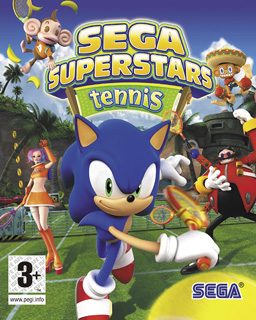
Sega Superstars Tennis is a sports video game developed by Sumo Digital and published by Sega. It is the second title in the Sega All-Stars series, preceded by Sega Superstars (2004), and crosses over characters, locations, and soundtracks from several Sega franchises, including Sonic the Hedgehog, Space Channel 5, and Super Monkey Ball.
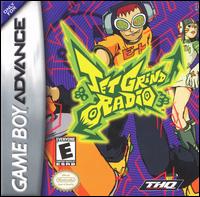
Jet Grind Radio is a video game for the Game Boy Advance system, which is based on the Dreamcast title Jet Set Radio. The game was developed by Vicarious Visions and published by THQ.
Puyo Puyo (ぷよぷよ), previously known as Puyo Pop outside Japan, is a series of tile-matching video games created by Compile. Sega has owned the franchise since 1998, with games after 2001 being developed by Sonic Team. Puyo Puyo was created as a spin-off franchise to Madō Monogatari, a series of first-person dungeon crawler role-playing games by Compile from which the Puyo Puyo characters originated. The series has sold over 9 million copies, including the Madō Monogatari games.
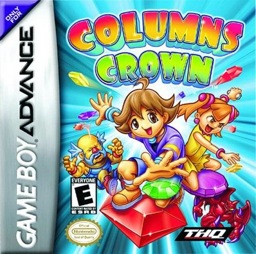
Columns Crown is a puzzle game developed by WOW Entertainment for the Game Boy Advance. It is part of the Columns series and was released in Europe on December 7, 2001, in Japan on December 13, 2001, and in North America on February 4, 2002. The game was later re-released twice as part of the 2 Games in 1 twin-pack cartridge in Europe, first bundled with Sonic Pinball Party on November 11, 2005 and then with ChuChu Rocket! on November 28, 2008. The latter compilation, aside as being the final one released on the system in Europe, was the final game to be released on the Game Boy Advance.

Hot Wheels: Burnin' Rubber is a 2001 racing video game developed by Altron and published by THQ for the Game Boy Advance. The game is based on the Hot Wheels toy series.
